When you come to China, you will want to learn more about traditional Chinese culture. On this 6-day Beijing student tour, you will come to the Forbidden City, Lama Temple, Summer Palace, and other royal palaces to experience the luxurious life of the royal family in ancient China. You will also visit the Capital Museum and Beijing Zoo, which is a highlight of our 6-day China student tours in Beijing. In addition, we have arranged a calligraphy class for you. The calligraphy teacher will patiently teach you how to use a brush and write Chinese characters. On the Beijing student tour with Great Wall, you will be able to climb the Juyongguan Great Wall, see the ancient fortifications of China, and learn interesting stories about the construction of the Great Wall. I am sure that you will have a rewarding trip to Beijing.

Welcome to Beijing! In the next few days, we will take you to many places that are considered landmark buildings in Beijing. Upon your arrival, you can see your tour guide at the airport waiting for you, and then you will be driven to the local hotel that we arranged for you. Have a good rest today, and tomorrow we will start our tour!
Beijing is the capital as well as an ancient city of China with more than 3,000 years of history. It covers an area of 16,410 square kilometers with more than 20 million permanent residents. As a famous historical and cultural city, Beijing is rich in tourism resources. During our Beijing Student Tour, we will visit many famous sites, including the Forbidden City, the Temple of Heaven, the Temple of Confucius, the Chang Tomb, and the Capital Museum. In addition, we have arranged calligraphy lessons and art exhibitions for you. We hope you will enjoy yourselves on this trip.
This morning, you will visit Tian’anmen Square, located at the center of Beijing. Covering an area of 440,000 square meters, it can hold over 1 million people for grand gatherings. In the square, you can see The National Flag Pole, the Monument to the People’s Heroes, the Memorial Hall of Chairman Mao, and the Zhengyang Gate Tower stand along the central axis of Beijing from north to south. As the political center of China, Tian’anmen Square has also been the site of many important historical events. On February 12, 1912, Empress Dowager Longyu issued an edict of abdication on Tian’anmen Square in the name of Emperor Xuantu, the last emperor of the Qing Dynasty (1636-1912). On October 1, 1949, the founding ceremony of the People’s Republic of China was held here. Tian’anmen Square has witnessed the decline and rise of China.
Continue walking northward, we will visit the Forbidden City (closed each Monday) next. The Forbidden City in Beijing is a royal palace in the Ming (1368-1644) and Qing Dynasties of China, located in the center of Beijing. This imperial palace, centered on three major halls, covers an area of about 720,000 square meters, with more than 70 palaces and more than 9,000 rooms. The Forbidden City was started to build in 1406 and completed in 1420. There are 24 emperors who once lived there, and the most notable one was Emperor Kangxi. Emperor Kangxi was the fourth emperor of the Qing Dynasty and the second emperor after the capital of the Qing Dynasty was set in Beijing. Emperor Kangxi ascended the throne at the age of 8, reigning for 61 years, the longest-reigning emperor in Chinese history. At the beginning of his reign, the domestic and international situation was very complicated. In the face of the grim situation, he insisted on large-scale use of troops to achieve territorial integrity and unity. As a teenager, Emperor Kangxi thwarted the powerful ministers and began to truly take the reins of power. As an adult, in 1681, he put down a rebellion started by three vassal kings. He unified Taiwan through the Battle of Penghu, thwarted the Russian invasion forces, and secured China’s sovereignty over the Heilongjiang River basin. He also made three trips to conquer Kardan and won. Emperor Kangxi made a great contribution to the stability and progress of China.
After lunch, we will visit Lama Temple, the most famous imperial temple during the Qing Dynasty. It is the largest Tibetan Buddhist temple in Beijing and also a must-see place for tourists at home and abroad. With a history of 300 years, the Lama Temple is the place where Emperor Yongzheng (the fifth emperor of the Qing Dynasty) once lived. When you enter the Lama Temple, the first attraction you will see is a big Shakyamuni Buddha statue. The statue is serene, kind-eyed, dressed in gorgeous costume, and seems to be chanting. The corners of the Buddha’s mouth are slightly upturned. You will see the devotees from all over the world worshiping the Buddha, and burning incense, showing their reverence for this Buddha.
When you come to China, it’s necessary to know the important position of Confucius in ancient China, so we arranged the Confucius Temple for you. The temple is dedicated to Confucius, the famous thinker, educator, and world cultural celebrity, and has a long history. It was built in 1302 and was completed in 1306. The whole temple is divided into three courtyards, covering an area of about 22,000 square meters, with the traditional Chinese architectural layout of the main buildings distributed along the central axis, symmetrical left and right. The main buildings are covered with yellow glazed tiles, which is the highest architectural standard of the feudal society. During its long history of more than 700 years, it has become a sacred place where the rulers of Yuan (1271-1368), Ming, and Qing Dynasties honored and preached Confucianism, as well as a temple where many scholars who aspired to be successful worshiped. Wandering in the Confucius Temple, with its ancient cypresses, stone monuments, and high halls, it is really meant for you to feel the profundity of Chinese traditional culture with a peaceful and relaxed mind.
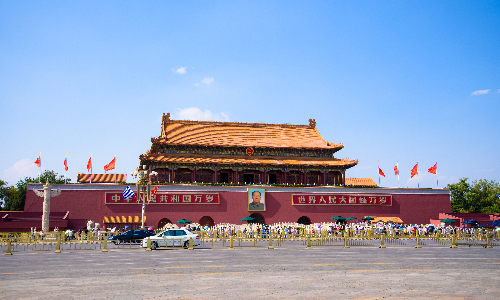

Today, we will drive northwest for about 1 hour and 10 minutes to visit the Chang Tomb of the Ming Tombs, 53 kilometers from the center of Beijing. Chang Tomb, ranking first of the Ming Tombs, is the joint tomb of Emperor Zhu Di (the third emperor of the Ming Dynasty) and his empress. It was built in 1409 and covers an area of about 120,000 square meters, making it the largest and earliest among the 13 tombs of the Ming Tombs. The buildings here are also the most well-preserved, with all the supporting palaces and towers surviving. The main building is the Ling’en Palace, which was the place where the successive emperors worshiped the emperor Zhu Di and his empress. The building is on a three-story pedestal carved from white marble, with a gold brick pavement. All the wooden parts are made of golden nanmu, a precious wood unique to China. The 60 pillars with a diameter of more than one meter and a height of more than ten meters hold the 2,300-square-meter hip roof, which is majestic and unparalleled in the world. You will be shocked by the luxury of this palace, which symbolizes the supremacy of the imperial power.
In the afternoon, we will go southwest and then northwest for 27 minutes to the Juyongguan Great Wall, 24 kilometers from the Chang Tomb. During the Great Wall student tour, you will have a chance to see the magnificent Great Wall of China, and I am sure that you will be impressed by this trip! The Juyongguan Great Wall is an essential pass of the entire Great Wall and a barrier to the northwest of Beijing in ancient times, with dangerous terrain. The winding wall was restored on the original site, with a total length of 4,142 meters. Standing on the newly restored Juyongguan tower and looking around, you will see the majestic Great Wall as two giant hands stretching out from the pass, winding and twisting.
When we go back to our hotel, we will see the Bird’s Nest and the Water Cube on the way. We will take some pictures outside. The Bird’s Nest was the main stadium for the 2008 Beijing Olympics, covering 204,000 square meters and accommodating 91,000 spectators. The opening and closing ceremonies of the Olympic and Paralympic Games, track and field competitions, and the finals of soccer matches were held here. After the Olympic Games, the Bird’s Nest became a large professional venue for Beijing citizens to participate in sports activities and became a landmark sports building and Olympic legacy.
Next to the Bird’s Nest, the Water Cube, also known as the National Swimming Center, is the main swimming center of the 2008 Beijing Olympics. The interior of the Water Cube is a six-story building, and there is a competition hall, a warm-up pool, a multi-function hall, and a large water playground. It is also one of the competition venues in Beijing for the 2022 Beijing Winter Olympic Games. During the Beijing 2022 Winter Olympic Games, the Water Cube will be converted into Ice Cube as the competition venue for curling events, with a capacity of about 4,600 spectators.
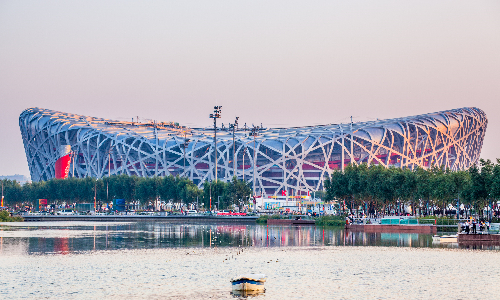
After breakfast, we first proceed to the world-renowned Capital Museum (closed each Monday), a modern comprehensive museum with the most advanced facilities. The exhibits are based on the collections of the Capital Museum over the years and the cultural relics excavated in Beijing, forming a modern exhibition with unique Beijing characteristics. The museum has a total construction area of 63,390 square meters, divided into two underground floors and five above-ground floors. The museum has different exhibition halls with different themes, such as porcelain exhibitions, Buddha exhibitions, jade exhibitions, bronze exhibitions. In these exhibitions, you can see beautifully crafted artworks from different periods of ancient China. In addition, multimedia displays, such as multi-screen projection, phantom imaging, and digital movies, are widely used in the exhibition to bring you a unique viewing experience.
Next, we will visit Beijing Zoo. Beijing Zoo was built in 1906 and is the earliest zoo in China to open and keep the largest variety of animals on display. Covering an area of 860,000 square meters, it is one of the largest zoos in China. You can see lions, tigers, white bears, golden monkeys, elephants, amphibians, rhinos, and hippos in the zoo. The most representative attraction is the Giant Panda House. The Panda House covers an area of 10,000 square meters and has three indoor exhibition halls, divided into three parts respectively for adult pandas, young pandas, and mother baby pandas, each of which is independent. You will learn about the most authentic living environment of giant pandas.
In the afternoon, we will visit the Summer Palace, an imperial garden of the Qing Dynasty. The garden covers an area of 3.009 square kilometers, with more than 3,000 palace and garden buildings in various forms, and is also known as the Royal Garden Museum. The Summer Palace is mainly composed of two parts, the Longevity Hill and the Kunming Lake. On the foot of the Longevity Hill, there is a 700-meter Long Corridor, which has more than 8,000 colorful paintings on the beams. The subjects of these paintings include natural landscapes and episodes of classical Chinese literature. Why are there so many plot-rich paintings in the corridor? It is said that Emperor Qianlong’s mother loved to listen to stories and often had her maids tell her all kinds of stories while touring the corridors. Over time, there were no new stories to tell, which made the maids very anxious. Later, they came up with a good idea that the story could be painted on the beams on both sides of the corridor. From then on, the palace maids no longer worried about not having stories to tell. The Empress Dowager, due to her old age and blurred vision, could not see the colorful paintings on the beams, so she was unaware of them.
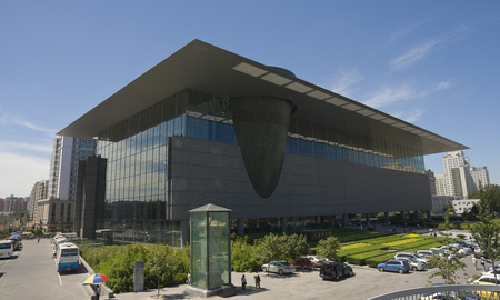

Today, we will take a look at Beijing Hutongs by taking the rickshaw. Hutongs are small alleys in Beijing, playing an important role in local transportation and have become a symbol of Beijing culture. At first glance, Beijing’s hutongs all look the same, with grey walls and grey tiles. If you visit a few hutongs and talk to the old residents for a while, you will find that every hutong has a legendary experience and many interesting stories.
In addition to rickshaw rides through the Hutongs, we will take a calligraphy class here. Chinese characters were created by Chinese people, starting with pictures and evolving over thousands of years into today’s script, and then into calligraphy when our ancestors invented writing with brushes. Throughout history, Chinese characters have been written mainly with brushes. In this class, you will learn some basic calligraphy knowledge, use a brush, as well as write a few Chinese characters. I am sure that this is an opportunity to learn about Chinese culture. You will also be able to show off your skills in front of your friends and families when you return home.
After lunch, we will bring you to Silk Street, an international tourist shopping market in China. Silk Street opened in 1978, with a few stores scattered among embassies and diplomatic apartments. Later, as more and more people set up stalls selling fruits, souvenirs, and handicrafts, the market became a folk trade center where overseas tourists would come to visit and shop. There are some products with national characteristics that are very popular among consumers all over the world, such as high-class clothing, silk, pearls, porcelain, tea, and handicrafts. As Silk Street gradually rose to fame overseas, it became one of the must-see attractions for foreigners visiting Beijing. Former French President Jacques Chirac, former U.S. President George Bush Sr., and former U.S. Secretary of State Mrs. Baker have all been here to shop for clothing.
Today’s last stop is the 798 Art District. 798 Art District is a cultural and creative industry cluster in Beijing, with over 400 galleries, design studios, art exhibition spaces, artists’ studios, fashion stores, restaurants, bars, and various cultural institutions from different countries and regions. 798 Photo Gallery here is a professional photography gallery. With 280 square meters of exhibition space, it was converted from an old industrial building in German Bauhaus art style. Here, you will find a variety of traditional and avant-garde photographs, mostly documenting the people’s life from the last century. Various professional photography events and international photographic art exchanges are also held here.
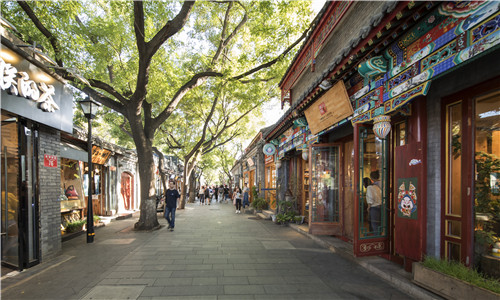
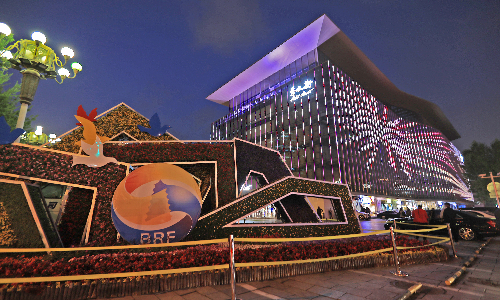
This morning, you have to say goodbye to China. Your tour guide will take you to the airport and see you off. We hope you had a good time on our Beijing Student Tour, and we will always welcome you back to China.
Editor: Fan Lin
Proofreader: Summer Hou
| City | Five Star hotel list | Four Star hotel list |
|---|---|---|
| Beijing | Sunworld Dynasty Hotel Beijing Wangfujing | Sunworld Hotel Wangfujing |
 |
![]() About your child or infant, please contact us for a discounted price.
About your child or infant, please contact us for a discounted price.



We started with a few days in Beijing & ended in Shanghai, from where we visited the Forbidden City and Great Wall. In between we visited Terra Cotta Warriors Museum, Panda Base, Shanghai Disneyland.

We had a wonderful holiday in China which will remain long in the memory. China is a breathtakingly beautiful country full of splendid temples and palaces, mountains and rivers, peaceful rural scenes and bustling shopping streets.
 QUICK ENQUIRY
QUICK ENQUIRY